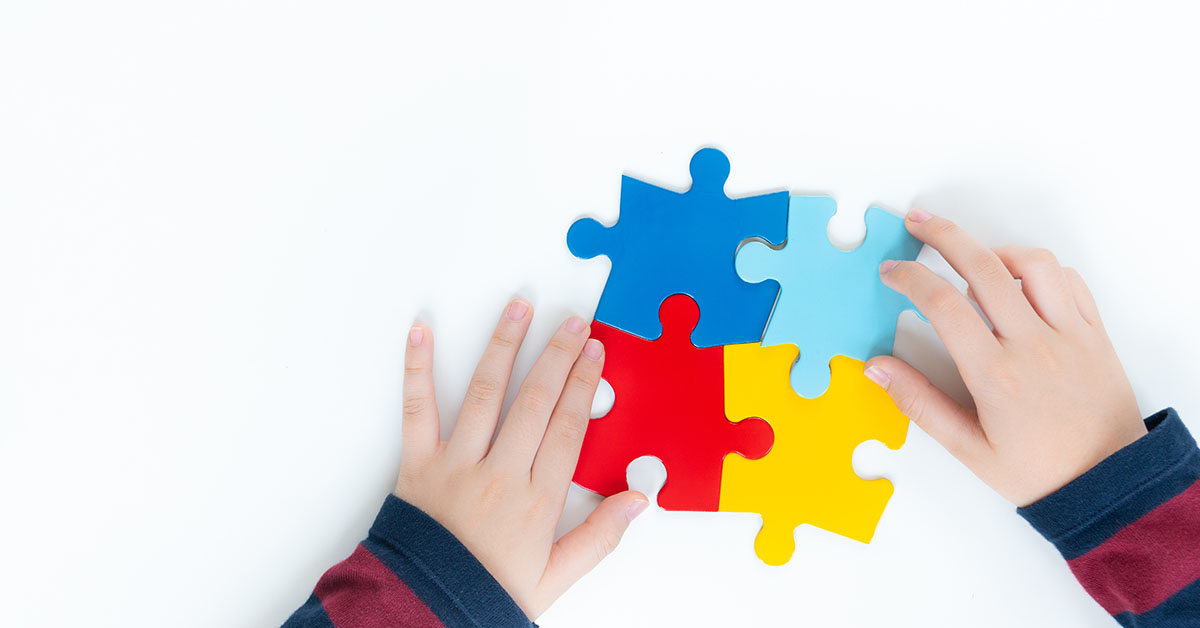Discovering Autism: Methods for Effective Interaction and Interaction
Effective communication and interaction with individuals on the autism spectrum require a thorough understanding of their special demands and preferences. The details of these techniques disclose additional considerations that merit exploration, particularly in how they can be adjusted to diverse contexts and private experiences.
Comprehending Autism Range Disorder
Autism Spectrum Condition (ASD) incorporates a series of neurodevelopmental problems identified by obstacles in social communication, interaction, and repeated actions. The term "spectrum" mirrors the varied symptoms and differing levels of severity experienced by people with ASD. While some may exhibit substantial impairments, others might display high-functioning traits, permitting higher freedom in day-to-day live.
The beginning of ASD normally happens in very early youth, with indicators commonly recognizable by age two. Very early signs may consist of postponed speech advancement, minimal eye get in touch with, and difficulties in recognizing social hints. The precise etiology of ASD continues to be unclear, study recommends a mix of environmental and genetic elements plays a critical function in its development.
Individuals with ASD typically possess unique staminas, such as increased attention to detail and outstanding memory skills. They might struggle with understanding abstract concepts and taking care of modifications to routine - autism. Consequently, interventions and assistance tailored to private demands are important for fostering communication and social skills. Recognizing the intricacy of ASD is vital for advertising recognition, acceptance, and effective approaches that facilitate meaningful interactions with people on the range.

Value of Clear Communication
Reliable communication is vital for promoting understanding and link, particularly for individuals with Autism Range Disorder (ASD) Clear interaction not just promotes social communications but likewise boosts the individual's ability to share their emotions, ideas, and requirements. For people with ASD, the subtleties of language can typically be testing; therefore, using unambiguous and uncomplicated language is necessary.
In addition, clear interaction helps in reducing disappointment and anxiety that might emerge from misunderstandings. When messages are conveyed in a direct and regular fashion, people with ASD are much better geared up to analyze details properly, which can dramatically enhance their social interaction and engagement in different setups.
Establishing regimens and making use of aesthetic supports can further boost clear communication. These techniques supply individuals with predictable frameworks that aid understanding and retention of information. Additionally, actively paying attention and being client during interactions promotes an encouraging setting where individuals with ASD feel valued and comprehended.
Inevitably, prioritizing clear interaction not just equips individuals with ASD yet likewise cultivates more meaningful links with their peers, caregivers, and the larger area, leading the way for comprehensive communications and collaborative relationships. - autism
Non-Verbal Communication Techniques
Communication prolongs beyond words, and for people with Autism Spectrum Condition (ASD), non-verbal hints play a substantial duty in interactions. Non-verbal communication techniques can consist of face expressions, motions, body movement, and eye get in touch with, every one of which serve as important parts for sharing emotions and intents.
Understanding and translating these non-verbal signals can improve interactions with individuals with ASD. For instance, a warm smile or open posture can develop a welcoming atmosphere, encouraging engagement. Making use of aesthetic aids-- such as photo cards or icons-- can bridge communication voids and assist communicate messages a lot more effectively.
It is likewise essential to be mindful of individual space, as individuals with ASD may have various convenience levels relating to closeness. Observing their reactions to physical closeness can inform proper modifications.

Producing Supportive Environments
Producing an encouraging environment is vital for fostering favorable communications and improving the wellness of people with Autism Spectrum Condition (ASD) Such environments can considerably decrease stress and anxiety and develop a feeling of safety, allowing people to express themselves extra easily.
To attain this, it is essential to think about sensory sensitivities that individuals with ASD might experience. Modifying the physical space to include soft lighting, very little background noise, and comfy seats can develop a soothing ambience. In addition, utilizing constant regimens and clear aesthetic routines can assist people anticipate transitions and decrease unpredictability, further advertising comfort.
Social spaces must be structured to reduce frustrating stimulations while giving possibilities for interaction in preferred tasks. why not look here Facilitating locations designated for silent time can additionally function as a refuge during moments of stress. Significantly, integrating components of choice empowers individuals, permitting them to reference exercise agency in their setting.
:max_bytes(150000):strip_icc()/GettyImages-1377530534-2000-fc355c43782b496c947c182d17b8b5db.jpg)
Encouraging Social Interactions
Promoting social interactions among people with Autism Range Problem (ASD) needs willful strategies that prioritize convenience and engagement. Establishing foreseeable regimens can help reduce stress and anxiety, making social settings a lot more friendly. Creating organized atmospheres with specified duties and responsibilities allows people to engage without the overwhelming stress of disorganized social dynamics.
Including passions and staminas into social tasks can act as a driver for communication. Arranging team activities around shared leisure activities or topics of attraction can facilitate natural discussions and connections. In addition, utilizing aesthetic supports, such as pictorial schedules or social scripts, can assist in understanding social hints and expectations.
Modeling suitable social habits is critical - autism. Grownups and peers need to show click now effective communication methods, including energetic listening and turn-taking. Role-playing scenarios can likewise give a risk-free room for people to practice these abilities
Last but not least, fostering peer relationships through comprehensive techniques is vital. Encouraging comprehensive playdates or group getaways can create possibilities for socializing in a comfy setup. By executing these educators, caretakers and techniques can substantially improve social interactions for people with ASD, advertising their total social advancement and well-being.
Conclusion
In verdict, effective communication and interaction approaches are crucial for supporting individuals with Autism Spectrum Condition. Stressing clear language, integrating non-verbal cues, and developing foreseeable routines dramatically boost interaction and reduce anxiousness. Producing helpful atmospheres cultivates safe social communications, while motivating shared interests helps with purposeful connections. Eventually, these strategies encourage individuals with autism to browse social landscapes, promoting their general well-being and enabling the growth of long-term connections.
Reliable communication and communication with people on the autism spectrum require an extensive understanding of their special needs and preferences. Clear interaction not only assists in social communications but also enhances the individual's capability to express their emotions, needs, and ideas.Fostering social communications among people with Autism Spectrum Condition (ASD) calls for deliberate techniques that focus on comfort and involvement. By executing these approaches, caretakers and educators can considerably enhance social interactions for people with ASD, advertising their general social development and wellness.
In final thought, effective interaction and interaction approaches are essential for supporting individuals with Autism Range Condition.